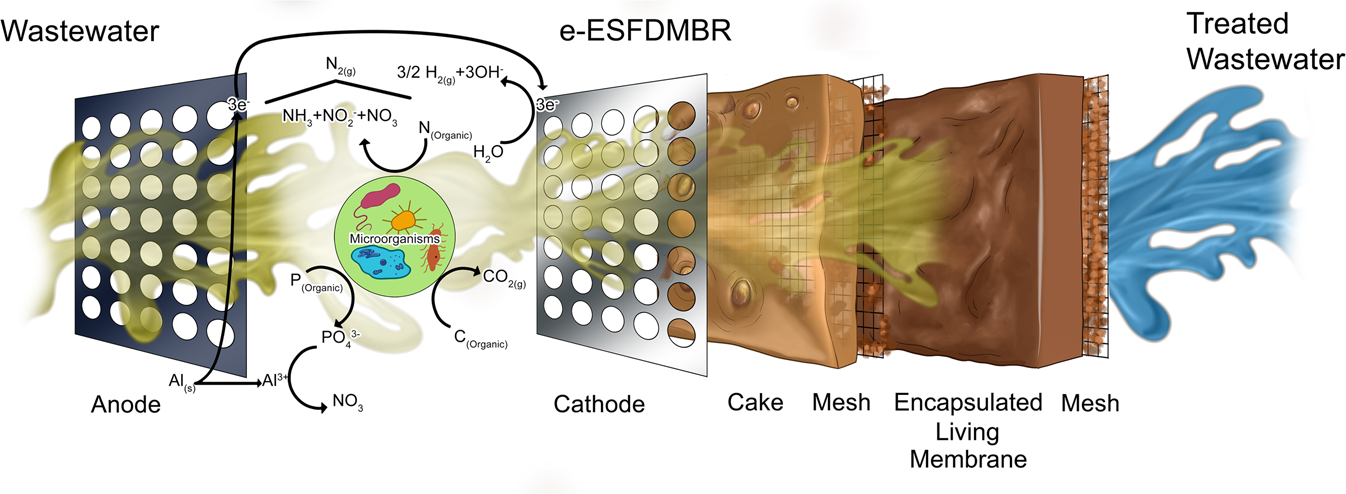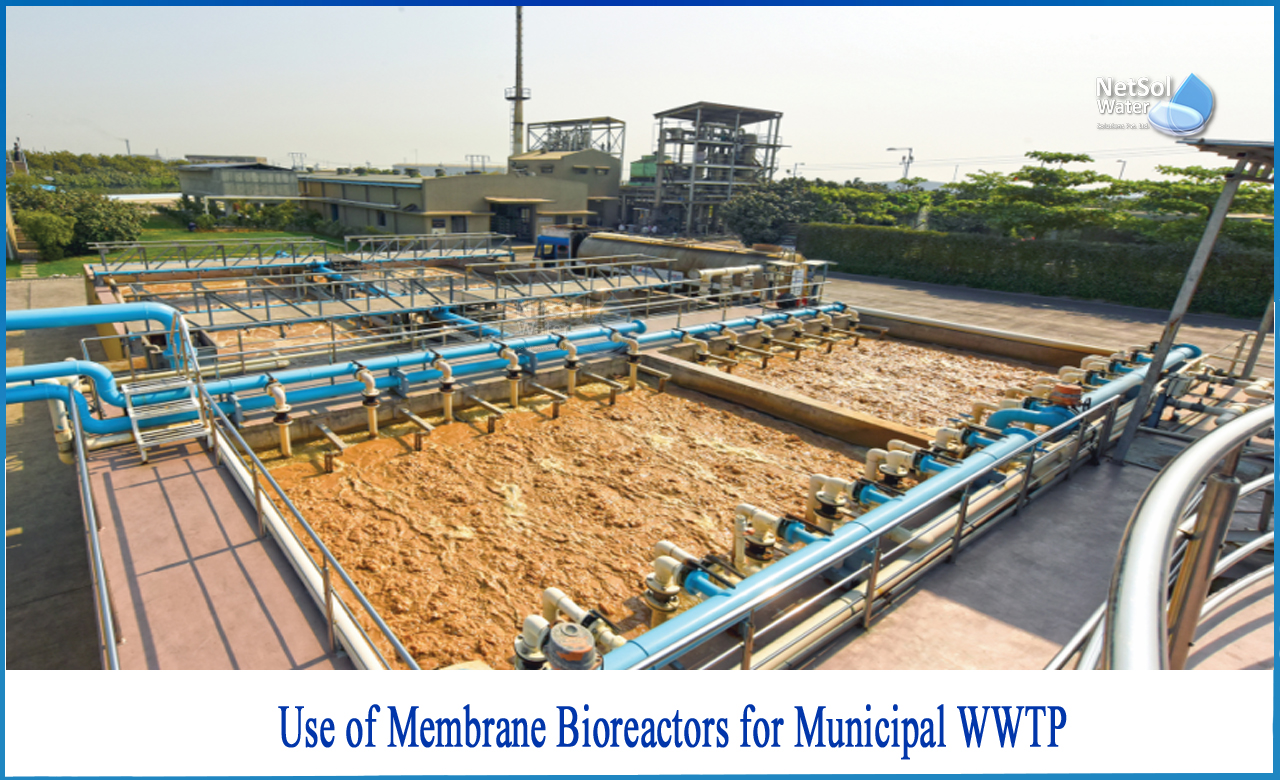How Membrane Bioreactor Can Help Meet Stringent Environmental Regulations
How Membrane Bioreactor Can Help Meet Stringent Environmental Regulations
Blog Article
Recognizing Membrane Layer Bioreactors: The Future of Wastewater Treatment
Membrane bioreactors (MBRs) stand for a noteworthy development in the field of wastewater treatment, integrating organic procedures with sophisticated membrane layer filtration to boost effluent quality. As worldwide water deficiency and stringent regulative frameworks become significantly pressing issues, MBR modern technology provides a reliable reaction via its ability to lessen footprint and optimize source recuperation. However, the adoption of MBRs is not without its challenges, which warrant cautious factor to consider. What are the vital aspects influencing their execution and lasting stability in numerous contexts? The responses might improve our approach to wastewater management.
What Are Membrane Layer Bioreactors?

The core elements of MBR systems consist of a bioreactor where microbial activity occurs and a membrane layer unit that filterings system the blended alcohol. This dual performance enables the simultaneous degradation of raw material and solid-liquid separation in a solitary action. MBRs can operate in both immersed and external configurations, with submerged systems being much more typical as a result of their portable style and functional efficiency.
The adoption of MBR technology has acquired grip in different applications, ranging from municipal wastewater therapy to industrial effluent monitoring. MBRs are especially helpful in scenarios where area is minimal or stringent effluent high quality standards have to be fulfilled. By preserving a high concentration of bacteria within the bioreactor, MBRs improve the destruction of natural contaminants, therefore generating greater therapy efficiencies compared to traditional techniques.
Key Benefits of MBR Innovation
The assimilation of biological therapy with membrane layer purification in MBR systems supplies many advantages that establish it in addition to typical wastewater treatment approaches. Among the key advantages is the boosted effluent quality. MBRs successfully get rid of put on hold virus and solids, attaining greater levels of filtration that satisfy rigorous discharge standards and promote water reuse applications.

An additional substantial advantage is the minimized sludge production. MBR systems produce much less excess sludge, leading to reduced disposal prices and a decrease in ecological effect. The closed nature of the membrane system reduces the danger of odor discharges and enhances overall procedure control.
Last But Not Least, MBRs are versatile and adaptable, making them suitable for various wastewater kinds, including commercial and community resources. The capacity to incorporate with advanced treatment innovations additionally boosts their performance, making MBRs a promising option for the future of wastewater management.
Challenges and Limitations of MBRs
While MBR innovation offers many advantages, it likewise deals with several difficulties and limitations that can influence its prevalent adoption. One considerable difficulty is the high resources and functional costs related to MBR systems. The preliminary financial investment for membrane layer materials and the needed infrastructure can be significant, making it less available for smaller municipalities or sectors.
Furthermore, membrane fouling remains an essential issue that can lessen system performance and boost upkeep demands. Fouling happens when solids, natural issue, or bacteria build up on the membrane surface, leading to reduced visit here leaks in the structure and needing regular cleaning or substitute.
One more constraint includes the intricacy of the technology. MBR systems call for experienced employees for operation and maintenance, which can be a barrier in regions with minimal technical expertise. In addition, the disposal of spent membrane layers presents environmental concerns, as the products are typically not naturally degradable and can add to squander administration difficulties.
Last But Not Least, while MBRs can efficiently treat a large range of wastewater, they may not appropriate for all applications, specifically those with high concentrations of fats, oils, and oils, necessitating more research study and advancement to deal with these constraints.
Applications of Membrane Bioreactors
In numerous industries, membrane bioreactors (MBRs) have actually become a flexible solution for wastewater treatment (Membrane Bioreactor). Their applications cover community, commercial, and farming settings, showcasing their flexibility and performance in varied environments. In community wastewater therapy plants, MBRs considerably enhance effluent quality, enabling water reuse and lowering the ecological impact of released wastewater
Industrially, MBRs are utilized in food and drink processing, textile manufacturing, and pharmaceutical production, where they efficiently treat high-strength waste streams. Their capability to take care of varying and rising and fall loads contaminant concentrations makes them particularly beneficial in these industries. Additionally, MBRs facilitate the elimination of virus, suspended solids, and raw material, adding to conformity with rigid discharge policies.
In agriculture, MBRs are significantly used for dealing with farming drainage and livestock wastewater, making it possible for the recuperation of nutrients for fertilizer production. They additionally help in the therapy of greywater for watering, advertising sustainable water monitoring practices.
The convenience of MBRs is additional evidenced by their assimilation with other modern technologies, such as anaerobic digestion and advanced oxidation procedures, enhancing overall efficiency and resource recovery in wastewater treatment systems.
The Future of Wastewater Therapy
Developments in technology and a growing emphasis on sustainability are forming the future of wastewater treatment. Membrane layer bioreactors (MBRs) exemplify this change by incorporating organic Your Domain Name therapy procedures with membrane filtering, resulting in high-grade effluent appropriate for reuse. The fad towards circular economic situations is triggering centers to adopt MBRs for their capability to recover resources, such as water and nutrients, from wastewater.
Technologies in membrane materials and arrangement are enhancing the efficiency and longevity of MBR systems, decreasing functional expenses and power intake. Smart modern technology integration, consisting of real-time monitoring and automated control systems, is additional maximizing performance and making it possible for predictive upkeep, therefore decreasing downtime.
Moreover, governing pressures and societal assumptions are pushing industries and districts to adopt even more sustainable practices. Membrane Bioreactor. The shift in the direction of decentralized wastewater therapy services is gaining grip, permitting for localized therapy that decreases transportation prices and energy usage
Final Thought
Membrane layer bioreactors (MBRs) represent a transformative approach to wastewater therapy, integrating organic procedures with advanced membrane layer technology. The benefits of MBRs, consisting of improved effluent high quality, reduced spatial demands, and reduced sludge production, position them as a feasible service amidst expanding urbanization and stricter environmental policies. Regardless of existing obstacles, the continued technology in membrane materials and functional approaches promises to boost the efficiency and fostering of MBRs, guaranteeing read their pivotal function in the future of sustainable wastewater administration.
Membrane bioreactors (MBRs) represent a significant technology in the field of wastewater treatment, integrating biological processes with sophisticated membrane layer purification to boost effluent top quality.Membrane bioreactors (MBRs) combine biological therapy procedures with membrane purification to effectively treat wastewater.The integration of organic therapy with membrane purification in MBR systems supplies many benefits that establish it apart from conventional wastewater therapy methods. Membrane layer bioreactors (MBRs) exhibit this shift by incorporating biological treatment procedures with membrane purification, resulting in top notch effluent ideal for reuse.Membrane bioreactors (MBRs) stand for a transformative strategy to wastewater therapy, integrating organic procedures with sophisticated membrane innovation.
Report this page